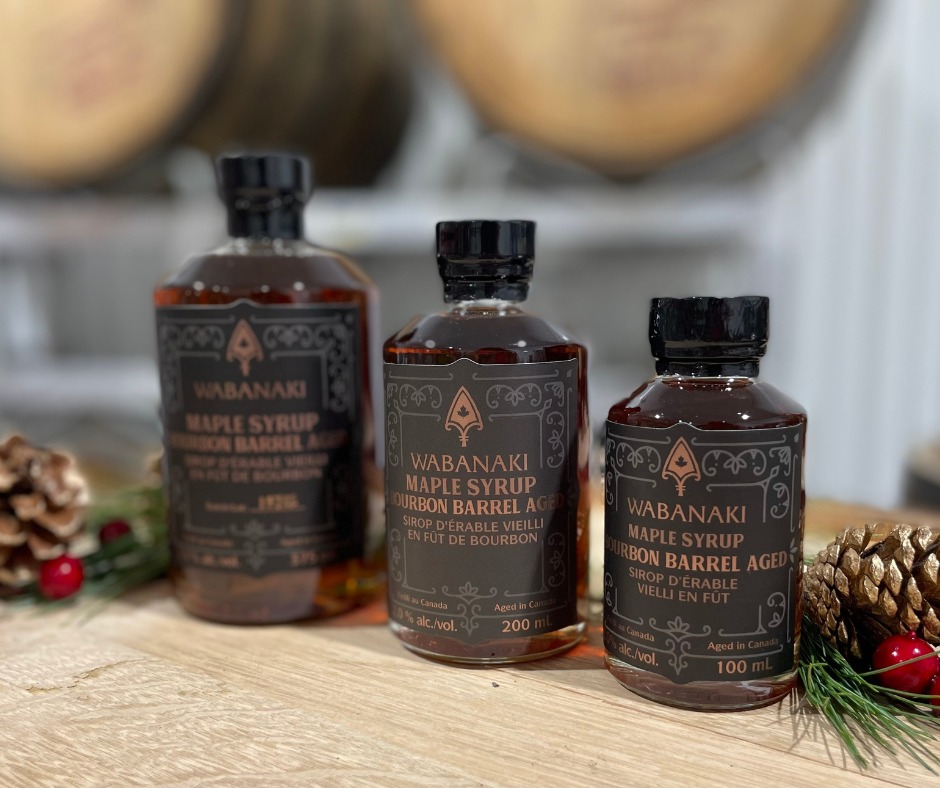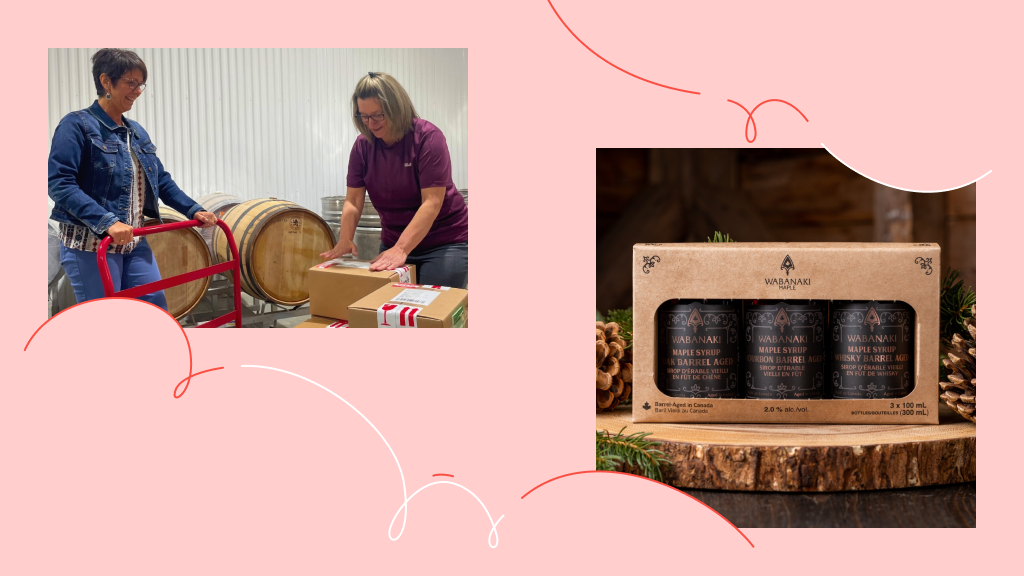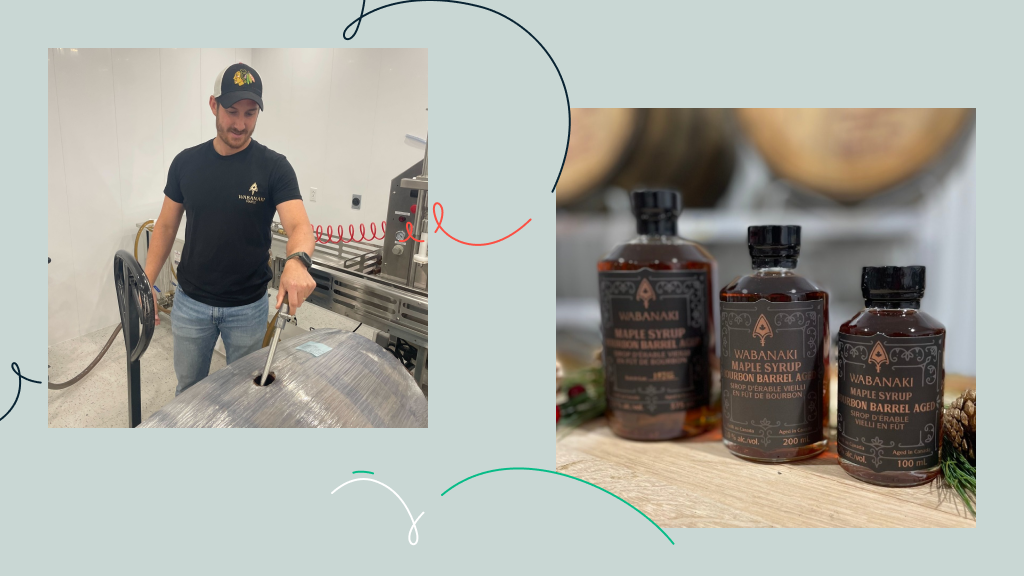
How Wabanaki Maple solves sticky problems — a tech stack that increases sales without hiring
Wabanaki Maple produces barrel-aged maple syrup in Canada and distributes their product throughout Canada and the United States. With the company growing rapidly, they needed a solution to switch from Excel spreadsheets and decided to go with Katana and its integrations. The tech stack they decided on allowed them to not only streamline the manufacturing process, but also double their sales volume.
It would require a full-time person just doing documentation in Excel to match what is automatically taken care of in Katana."
- Wabanaki Maple nailed down costs thanks to Katana’s live look into ingredients consumption and a transparent manufacturing process
- As a Food and Beverage industry manufacturer that sells products in Canada and USA, batch-tracking and multicurrency functionalities are crucial features
- The tech stack of Katana plus Shopify, QuickBooks Online, and Prospect CRM enabled them to increase sales without expanding the team
About Wabanaki Maple
Wabanaki Maple is a value-added maple syrup company based in Neqotkuk, New Brunswick, Canada. We spoke with Zak, a Sales & Operations Lead who joined the company a couple of years after it was founded.
Wabanaki’s primary product is a uniquely flavored barrel-aged maple syrup. Founder and CEO Jolene Johnson is from the Indigenous Tobique First Nation Brunswick. The Wabanaki Maple syrup is a traditional indigenous product, but with a modern spin.
The challenge they faced
The company grew rapidly from a two-person team to a small facility and then to a more prominent company with substantial production space and a dedicated on-site staff. The previously used Excel documentation simply couldn’t keep up with processes anymore.
Our business started very small with just Jolene and her husband working with barrels and maple syrup in a very small 500ft² building. It was basically just a temporary building on stilts. In May of 2022, they completed building their new 4,800ft² custom facility. Moving into the new facility, things got complicated quickly. Previous to the move, everything was basically tracked in Excel.”
Finding a solution
Zak explained to us that, to deal with the new scale of their business, Wabanaki Maple hired a consultant to help with current business development and establish new processes.
The reason we used a consultant was because we were starting from scratch and they helped us develop our roadmap for how we were gonna expand from a small to a large multinational company. Once we consulted with this company, they gave us a few options, and we went with Katana. It was in May of 2022 that we launched with Katana, and that made a huge difference in our documentation and time. Just knowing what we had in stock was big. I would say it was the smoothest takeoff for us.”
We were going from documenting things in Excel to actually having an inventory system, a pro system that would track everything for us and take it from there.”

Katana real-time inventory planner
According to Zak, one of the most important things in Katana for them was the ability to track ingredients, monitor every step of the manufacturing process, and as a result — nail down costs and margins.
“Knowing exactly what barrel goes into what product and being able to track what maple syrup is into that barrel, how long it aged, and really quantifying all those costs through the system has been a real game changer for us. Previous to that, we were just kind of guessing. That really allowed us to nail down exactly where our margins were, where our main costs were, and allow us to really define where we needed to be making adjustments on our pricing, on our products. That made a huge difference.”
Batch-tracking functionality
Another crucial matter for the Food and Beverage industry is batch-tracking. It was one of the main features that Wabanaki Maple looked into when choosing inventory tracking and manufacturing software.
Katana was the best fit for our production, and one of the main things was that batch tracking system. When we’re selling to larger chains, one of the first things that I ask is ‘Do you have a recall system in place?’ The answer is very much ‘yes’, and it is very smooth. As soon as they tell me a product code I can say exactly what day it was bottled, who bottled it, and where all those products came from that went into it — and all the documentation is also attached. Through all the purchase orders and everything, all the documentation is attached within Katana.”
Multicurrency
Zak said that recently Wabanaki Maple opened sales in the US and is now exporting their maple syrup there. This was when Katana’s multicurrency function came in handy.
It’s still one physical warehouse but we have completely separated our stocks, different labeling requirements and things like that for different countries. Being able to have them in Katana completely separate is wonderful. When we see those US sales come in, it shows as US dollars right on the sales screen. It gives us the exact currency conversion at the time of transaction. We’re still able to monitor our margins and our cost when that’s coming in. Also, a lot of our supplies often come from the US so we deal with the US a lot and on many different levels. That currency conversion, being able to have different customers in different currencies really helps us out where it automatically shows us US dollars, but it also gives us that live kind of currency conversion.”
Building a tech stack
Apart from built-in functionalities, the Wabanaki Maple team actively utilizes Katana integrations. Through Katana, they connected to Shopify, QuickBooks Online, and Prospect CRM. Zak shared their experience connecting and working with these apps together with Katana:
It’s very convenient to have everything linked together. Katana kind of acts as the main hub with our Shopify e-commerce side, our Prospect CRM and then QuickBooks Online on the other side. Everything goes through Katana but everything can be seen from there as well.”
We have a Canadian e-comm and then Shopify for our US sales. It’s very nice and seamless in that respect. When a customer goes on our website, they can order a product that automatically shows up in Katana. In the morning we just go in, print out our packing slips, fulfill those orders, mark them as fulfilled, and track the batch numbers of every product that goes out. If there’s ever a recall, we can see exactly where every bottle went, that’s all tracked right within that documentation. We can even go straight from Katana if we’re going to do the shipping through Shopify, there’s literally just a little button you click within Katana that brings you back to Shopify for the shipping and then you’re done. We can push that order straight through to QuickBooks for invoicing and tracking those dollar values as well. Then it also does a backflow into Prospect CRM. We do all our reporting through Prospect CRM so I can see all those Shopify sales there. From there I can track our revenue, I still see all our stock and can know where these products are going. Knowing where to put our advertising and marketing dollars, it also helps us actively see when we’re spending money in a certain location on advertising. We’re using Prospect CRM to view that whole picture, but tracking through Katana for everything else.”

Integrations empowered the Wabanaki Maple team with accurate data across all the connected platforms without manually entering data from one system to another, which saves them hours of time on a daily basis.
One of the big issues we had before we started using the Katana + Prospect CRM combo was just having customer information be accurate across all the platforms. Now it’s just a click of a button to go from one platform to another, verify that information is the same and then that all pushes through to QuickBooks as well for existing customers and a new customer. If we add a new customer to Prospect CRM, all I have to do is make sure that information is correct before I push that order through to Katana, it automatically pulls all that information through Katana and creates that new customer. And then when I do the invoice for our B2B customers, I just hit invoice and it’ll automatically generate that new customer within QuickBooks. And all that information is cohesive between all three. So just the amount of time saved in data entry is huge.”
Support
Another thing that Zak mentioned during our chat was Katana’s customer support and the Knowledge Base content. Katana’s YouTube tutorials helped them get started and the Knowledge Base articles with their convenient navigation were of great use, as well as the quick replies from Katana’s customer support members.
YouTube was my best friend when we first started using Katana just because we were all very fresh into implementing this as a system, going basically from nothing to a system. Even if it wasn’t specific to our process, it gave enough information for us to figure it out for ourselves and enter it in.”
One of the other things that is really convenient is there’s always the chat right within the Katana website. You can just click on the chat, ask a question. It’ll actually prompt you with some different related articles based on what text you entered. Then, if that doesn’t answer your question, you get to chat with one of the team members there and usually get sorted out within a question or two.”
The overall impact
Implementing Katana and having additional integrations to cover and automate workflows allowed Wabanaki Maple to drastically improve their fulfillment process and increase sales volume without hiring new team members.
We have I’d say, pretty close to more than doubled sales, but we haven’t really increased anyone in terms of sales and fulfillment. Those extra pieces and extra team members we’ve been adding have been more on the marketing side, more on developing our Shopify website, working on other parts of the business. Having these programs has allowed us to basically expand the business without having to expand these systems beyond the current staff. That’s where big savings have been for the price of the systems versus the price of a whole other salary is a huge savings. And the error rates and tracking is far beyond what anyone could do through an Excel spreadsheet or anything like that.”


